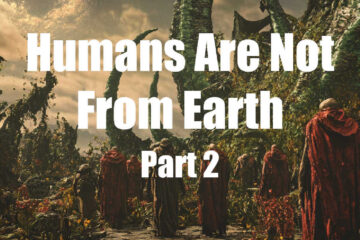Gobekli Tepe is yet another archeological site that to some, defies consensus history of the human race. The site is located in modern-day Turkey containing the worlds oldest known megaliths, which baffle the minds of geophysical surveyors because they’re far too advanced for the era they were built. First discovered in the 60s, the importance of these ruins wouldn’t be revealed until modern times. And like Dwarka, forces humanity to re-think the accepted version of the dawn of civilization.
[the_ad_placement id=”manual”]
When the site was discovered and surveyed by Istanbul University back in 1963, the researchers mistook the stone slabs for a Roman-Byzantine cemetery. For generations, the locals had been using the area for agricultural cultivation. They moved many rocks and stone slabs around in clearance piles. Over time, this formed the first layer of the excavation site, which in turn led the archaeologists to come up with the graveyard theory. Decades passed with this being the status quo concerning Gobekli Tepe.
[the_ad_placement id=”manual”]
It wasn’t until 1994 that a more objective view of the site was revealed by Klaus Schmidt of the German Archeological Institute. It was discovered that many of the ruins were far more ancient than the Byzantine Empire. In fact, Schmidt came to the conclusion that Gobekli Tepe was pre-historic. Rendering many history books obsolete. A new archeological survey was conducted which dated the ruins to be around a staggering 12,000 years old. Which cemented Gobekli Tepe as one of the most important archeological discoveries ever made.
[the_ad_placement id=”manual”]
The site is unique for two reasons: Not only is it beyond ancient, but it was covered in layers of dirt by the former occupants. It can’t really be said why the site was abandoned, however, because it was buried Gobekli Tepe has been immaculately preserved over the millennia.

They built this at a time humans are supposed to be hunter-gatherer cavemen
Now, for a long time, the site was considered a temple complex. You know, some ancient place of worship. For the most part that was a totally logical conclusion when comparing the site with other neolithic ruins around the Near East. But, recent research indicates this theory is not as reliable as formerly thought. Ancient temples and places of worship were the home of gods and treated with utter reverence. However, archeological evidence indicates daily activities of mundane life at Gobekli Tepe. Which would be inappropriate in a temple setting. The evidence also suggests not only people living at Gobekli Tepe but that the site had a pretty decent sized population, and very well could have been the capital of an unknown civilization in its own right. So the decorative pillars and massive construction efforts most likely weren’t made for a temple, but are the grand achievements of an ancient prehistory culture.
[the_ad_placement id=”manual”]
If you’re not familiar with fringe archeology, it may be hard to wrap your head around. Let’s just compare the age of Gobekli Tepe to other ancient sites. Stonehenge is a popular one. Well, Gobekli Tepe is older than Stonehenge by an insane 6,000 years. That means there’s a gap in time between the construction of Gobekli Tepe and Stonehenge as much as the construction of Stonehenge and the modern age. So according to “mainstream history” the ruins of Gobekli Tepe predate Egypt, the Sumerians, and even the alleged invention of writing by millennia. Everyone has heard about the magnificence of ancient Egypt, but the Sumerians are considered the oldest human civilization. They originated in the Fertile Crescent of the Near East, whose ancient tablets have given rise to the theory of the Annunaki and Nephilim thanks to Zacharia Sitchin. Though admittedly his work is pretty easy to debunk with enough research, it’s still fascinating.
[the_ad_placement id=”manual”]
Not only is Gobekli Tepe seriously ancient, but it was also thousands of years more advanced than what should be possible. The style, skill of the architects, and construction quality would be awe-inspiring in any era of history, even until the present day. Its construction shouldn’t be logically possible based on the accepted view of humanity at that age in our history. How were stone age people making engineering wonders that would be just as impressive today as I’m sure it was then? The sheer amount of manpower, engineering, project management, and limited technology should have made it impossible for a prehistory civilization to achieve. Gobekli Tepe’s very existence is an anomaly. The gigantic effort required to construct Gobekli Tepe would be a struggle even in modern times and take an immense amount of resources and adept architects and stonemasons to achieve. The stone structures would have required hundreds of people to build them. Moving around stone slabs the size at Gobekli Tepe would require hydraulic machines nowadays. But, somehow this ancient civilization pulled it off with ropes and pullies I’d assume? This indicates the inhabitants of Gobekli Tepe to be a strong civilized culture with immense social stability and sophisticated knowledge unknown to archeologists for most of human history.
[the_ad_placement id=”manual”]
The mystery civilization had brilliant minds capable of impossible feats of engineering and architectural design. I mean, the largest stones weigh up to ten tons. Who the hell is moving around ten-ton stone slabs before history even started? Not only that, but the pillars and stone works are stylized in artistic designs. Some even with human faces carved into them. Many people think whole pillars are stylized depictions of human beings, but there are lots of elegant animal carvings on the stone structures as well. These images are some of the few clues we have of the belief system the people who constructed Gobekli Tepe subscribed to. The entire site is decorated with elaborate artistic carvings way ahead of its time, easily comparable with any of the wonders of the ancient world. There’s no way it should have existed 12,000 years ago considering our understanding of history.

It has to be impossible people so ancient could create something so advanced
When the site was under re-excavation in the 90s, at first the site seemed like a single temple construction, but as they dug deeper, the immaculately preserved ruins just got wider and wider. It seemed like everywhere in the area the archeologists dug, there were more impressive stone ruins discovered. Gobekli Tepe is huge, with 20 different excavation sites to date. The site has the worlds first known structure with perfectly aligned north and south buildings, which would have required advanced knowledge of astronomy and mathematics.
[the_ad_placement id=”manual”]
Evidence suggests the site prospered and endured for around 3,000 years before being abandoned and lost to history for the next 9,000 years. This has been estimated to occur around the time of the last ice age. According to mainstream history, humans back then were primitive hunter-gatherers who were constantly on the move and nomadic in search for food. Making the existence of an advanced civilization having the ability to create a wonder like Gobekli Tepe a true anomaly in how we understand history.
[the_ad_placement id=”manual”]
The only thing that stopped early humans in their nomadic lifestyle was the discovery of farming. It’s agriculture that laid the foundations for civilization. This is a fact. So the discovery of Gobekli Tepe’s true nature means there was an advanced civilization using agriculture almost 6,000 years before it is supposed to have been invented. Farming is what lead to permanent settlements and allowed a more stable social life. It’s only when societies have stability that sophisticated cultures grow. Which leads to art, engineering, and sciences. All things that the creators of Gobekli Tepe had to have in abundance in order to create their architectural achievements.

Never underestimate the heights to which the human race can climb in achievement
Its existence could also suggest some pre-history humans created permanent settlements long before they gained the ability to farm. Which is HIGHLY unlikely, but possible. It’s not logical a civilization with the impressive technology and engineering that would be necessary to create something like Gobekli Tepe to not have the ability to farm. Though there are people like Graham Hancock who think agriculture popped up in the area soon after Gobekli Tepe was founded. Though the man’s views may be quite “out there” to some and just like anything should be taken with a grain of salt, they are quite fascinating. I’ve talked about him before and admit that I am a fan of his work, though I’ll never take what he says as straight fact, nor should you. If you’re unfamiliar with Graham Hanock, he’s a British writer and reporter who specializes in pseudoscientific theories about consciousness, ancient myths, and civilizations, as well as the mysteries surrounding the advancement of humankind throughout our history. A running theme in his books is an overall ancient mother culture he believes all ancient civilizations came from. Which according to him explains why all ancient cultures share a flood myth (the end of the last ice age) even though none of the cultures ever had any interaction with one another.
[the_ad_placement id=”manual”]
Hanock believes the creators of Gobekli Tepe were survivors of this pre-history mother culture. A civilization far more advanced than most throughout history (possibly even our modern civilization.) He also believes he knows the exact founding date of Gobekli Tepe, exactly 11,600 years ago. These are truly fascinating theories to me because I’ve loved Atlantis tales ever since I was a kid (but remember that grain of salt I talked about.) Hancock claims Gobekli Tepe was founded by the remnants this fallen civilization and commenced in a technology exchange with the hunter-gatherers of the area. They did this in an attempt to “re-start” civilization. According to Hancock they obviously failed, but they did spark the flame that would eventually burn into civilization in the millennia to come. Graham Hancock claims we are the descendants of all the knowledge passed down from these advanced people. Because there were other survivors of this fallen mother culture that attempted the same thing in other parts of the world.
[the_ad_placement id=”manual”]
It’s important to remember Hancock says these people were human beings, not aliens or anything like that. Ancient Alien theories too commonly write off the ingenuity and brilliance of the human race. It’s no wonder Gobekli Tepe is a favorite subject of the infamous History Channel show Ancient Aliens. A show where they present often groundless theories that aliens have visited Earth many times and have had a massive influence on humanity’s development. It can be an interesting show to watch, but is entirely based on the old saying “don’t let facts get in the way of a good story.” Though honestly ancient alien stuff is really fun to think about and research.

We ALL know and love this guy
After all the archeological information concerning Gobekli Tepe became available, its become one of the most famous sites in the world. And like I said earlier it’s also one of the most well preserved. Portions of it are still being dug up and restored till this day. Not only to draw in tourists but to give a clearer picture of what Gobekli Tepe may have looked like in its prime. Though it’s far older than the modern country of Turkey, it has become a point of national pride for them. Gobekli Tepe is among the greatest archeological finds in history, giving us a clue that we actually know very little concerning our origins as a species. Despite what historians may say. It’s archeological finds like these that can help break the accepted narrative and open peoples eyes to the fact that there are still so many mysteries about humanity just waiting to be discovered and solved.

One day I’ll have to visit the breathtaking monument to human accomplishment




0 Comments